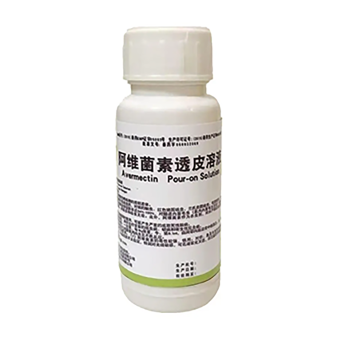- Afrikaans
- Albanian
- Amharic
- Arabic
- Armenian
- Azerbaijani
- Basque
- Belarusian
- Bengali
- Bosnian
- Bulgarian
- Catalan
- Cebuano
- Corsican
- Croatian
- Czech
- Danish
- Dutch
- English
- Esperanto
- Estonian
- Finnish
- French
- Frisian
- Galician
- Georgian
- German
- Greek
- Gujarati
- Haitian Creole
- hausa
- hawaiian
- Hebrew
- Hindi
- Miao
- Hungarian
- Icelandic
- igbo
- Indonesian
- irish
- Italian
- Japanese
- Javanese
- Kannada
- kazakh
- Khmer
- Rwandese
- Korean
- Kurdish
- Kyrgyz
- Lao
- Latin
- Latvian
- Lithuanian
- Luxembourgish
- Macedonian
- Malgashi
- Malay
- Malayalam
- Maltese
- Maori
- Marathi
- Mongolian
- Myanmar
- Nepali
- Norwegian
- Norwegian
- Occitan
- Pashto
- Persian
- Polish
- Portuguese
- Punjabi
- Romanian
- Russian
- Samoan
- Scottish Gaelic
- Serbian
- Sesotho
- Shona
- Sindhi
- Sinhala
- Slovak
- Slovenian
- Somali
- Spanish
- Sundanese
- Swahili
- Swedish
- Tagalog
- Tajik
- Tamil
- Tatar
- Telugu
- Thai
- Turkish
- Turkmen
- Ukrainian
- Urdu
- Uighur
- Uzbek
- Vietnamese
- Welsh
- Bantu
- Yiddish
- Yoruba
- Zulu
Nov . 02, 2024 07:36 Back to list
oxytetracycline injection 50 mg ml
Understanding Oxytetracycline Injection A Closer Look at 50 mg/ml Preparation
Oxytetracycline is a broad-spectrum antibiotic that belongs to the tetracycline class of medications. It is widely used in the treatment of various bacterial infections in both humans and animals. The formulation known as oxytetracycline injection at a concentration of 50 mg/ml is particularly significant in clinical settings due to its efficacy and versatility in treating infections.
Mechanism of Action
Oxytetracycline works by inhibiting bacterial protein synthesis. It binds to the 30S ribosomal subunit, preventing the attachment of aminoacyl-tRNA to the mRNA-ribosome complex, which in turn halts the growth of bacteria. This mechanism makes it effective against a wide range of gram-positive and gram-negative bacteria, as well as some atypical pathogens. Its broad-spectrum action means it can treat infections like pneumonia, urinary tract infections, and specific skin infections that are otherwise hard to manage.
Indications and Uses
The 50 mg/ml injection formulation of oxytetracycline is indicated for various infections, including those caused by susceptible strains of bacteria. It is commonly used in the treatment of respiratory tract infections, skin infections, and infections of the gastrointestinal system. In veterinary medicine, oxytetracycline is also employed to treat infections in livestock and pets, highlighting its role in both human health and veterinary practices.
Administration and Dosage
oxytetracycline injection 50 mg ml

Oxytetracycline injections are typically administered via intramuscular or intravenous routes, depending on the severity of the infection and the specific patient conditions. The dosage may vary based on factors such as the patient's age, weight, and the type of infection being treated. Close adherence to the prescribed dosage is critical to avoid potential side effects and to ensure the antibiotic's effectiveness.
Side Effects and Precautions
While oxytetracycline is generally well-tolerated, it is not without its side effects. Common adverse reactions can include gastrointestinal disturbances such as nausea, vomiting, and diarrhea. Allergic reactions, though rare, can occur and necessitate immediate medical attention. Additionally, it is important to note that tetracyclines can cause photosensitivity, making patients more susceptible to sunburn.
Moreover, the use of oxytetracycline is contraindicated in pregnant or breastfeeding women due to the risk of potential harm to the fetus or infant. It can also affect bone growth and dental health in children, leading to enamel hypoplasia and discoloration of teeth.
Conclusion
In summary, the 50 mg/ml formulation of oxytetracycline injection is an invaluable tool in the arsenal against bacterial infections in both humans and animals. Its broad-spectrum activity, coupled with effective mechanisms of action, makes it a preferred choice in many clinical scenarios. However, careful consideration of its side effects and contraindications is essential for ensuring patient safety and maximizing therapeutic benefits. As with any antibiotic therapy, it is critical to use oxytetracycline judiciously to combat resistance and preserve its efficacy for future generations.
-
Guide to Oxytetracycline Injection
NewsMar.27,2025
-
Guide to Colistin Sulphate
NewsMar.27,2025
-
Gentamicin Sulfate: Uses, Price, And Key Information
NewsMar.27,2025
-
Enrofloxacin Injection: Uses, Price, And Supplier Information
NewsMar.27,2025
-
Dexamethasone Sodium Phosphate Injection: Uses, Price, And Key Information
NewsMar.27,2025
-
Albendazole Tablet: Uses, Dosage, Cost, And Key Information
NewsMar.27,2025













